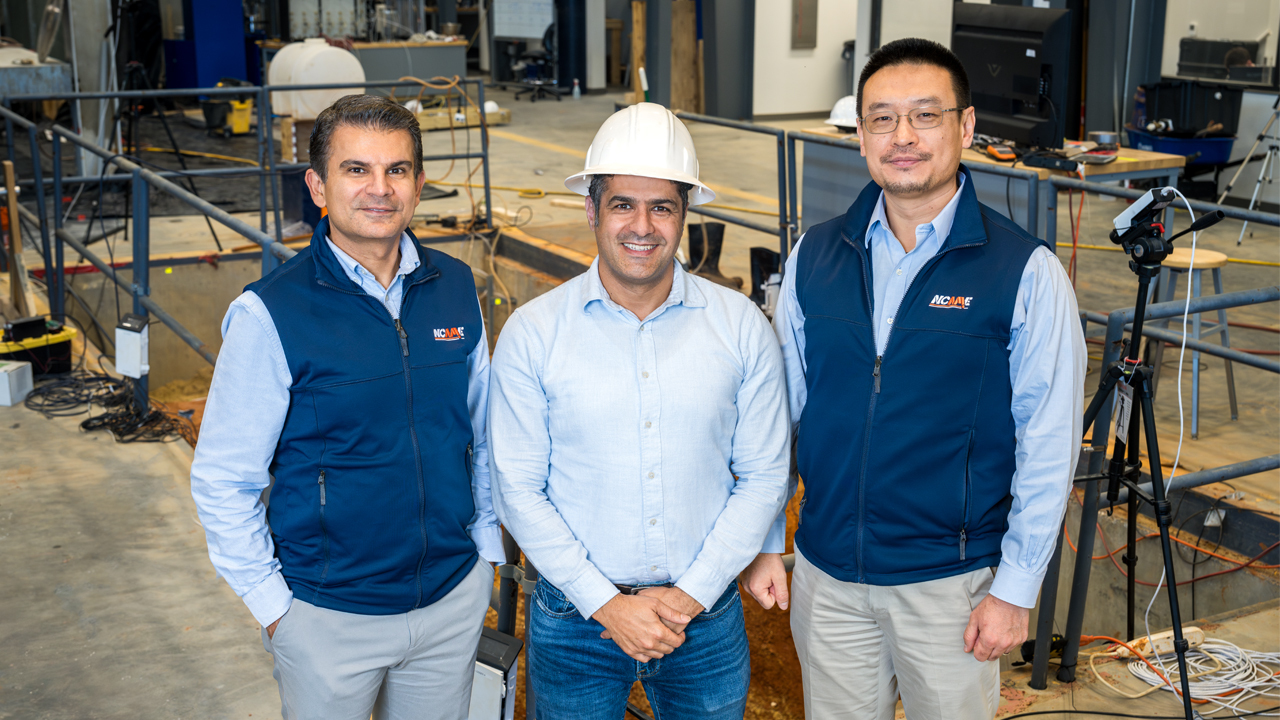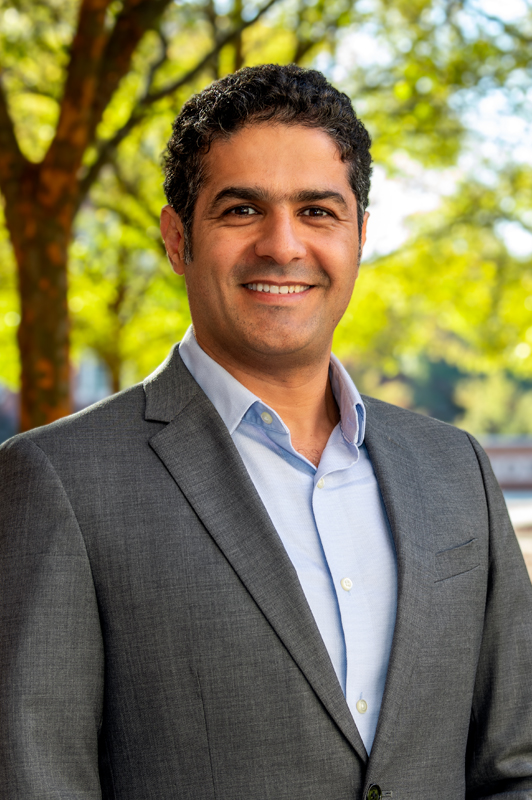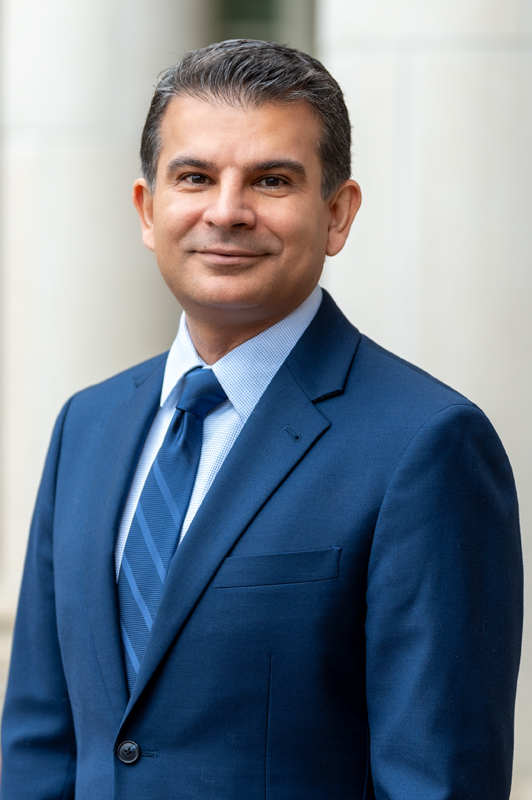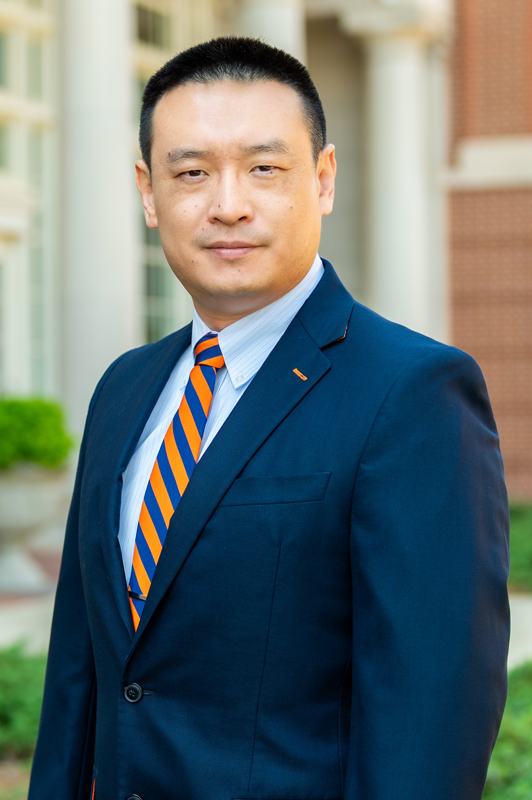Civil and Environmental Engineering assistant professor in collaboration with the NCAME team to develop robot for efficient utility line installation
Published: Nov 12, 2024 8:00 AM
By Dustin Duncan
Installing utility lines can be time-consuming and labor-intensive, but a faculty member in the Department of Civil and Environmental Engineering in collaboration with a team of faculty members at the National Center for Additive Manufacturing Excellence (NCAME) hope to design a robot that could do the job more efficiently.
Ali Khosravi, assistant professor in civil and environmental engineering, is leading the AU team, involving Nima Shamsaei, Philpott-WestPoint Stevens Distinguished Professor of mechanical engineering and director of NCAME and Shuai Shao, associate mechanical engineering professor and NCAME's associate director for research and innovation, to design a robot that can attach to a conduit, run it underground and resurface for another use.
This process would allow for the installation of utility lines without heavy construction equipment and with less disruption to the soil. This work is in collaboration with Case Western Reserve University, Stony Brook University, and the University of South Alabama, plan
The project is funded by a $2.1 million Department of Energy award titled "Peristaltic Conduit with Stiff Structure and Compliant Skin."
The robot will move in any direction using a peristaltic motion similar to how worms move.
"The idea is to develop a robot that causes minimal soil movement, so the impact on the infrastructure above the soil is less," Khosravi said. "The conduit is going to expand and elongate. With that expansion, it provides anchorage, and the elongation provides the thrust force needed for drilling."
“The team must design a durable and strong material to go underground in different environmental conditions” Shamsaei said. “If it's too soft, it won't expand. The material must provide enough pressure on the soil to encourage forward movement.”
Khosravi, in collaboration with Stony Brook, will base the design on their previous work with morphing skins and structures, which make solid structures flexible. He will also collaborate with the NCAME team on the development of a drill head for the robot.
“The material selection of a drill head for the robot should be done very carefully for it to withstand the harsh working environment,” Shao said. “The material testing should mimic the operational loading and environment.”
Once the robot is designed, the team will perform a series of tabletop and large-scale experiments to evaluate the burrowing capabilities of the system. For large scale testing, the geotechnical testing chamber at the Advanced Structural Engineering Laboratory (ASEL) will be utilized.
"ASEL will test the robot in their large geotechnical testing chamber by creating a large layer of soil. We will send the robot down with a conduit and see how it works," Khosravi said. "We're also going to put obstacles in the soil to see if it can easily go around them."
Khosravi said ASEL's testing capabilities are vital to the project because the DOE is strict about the environmental impacts of the project, and testing in the field would be challenging due to uncontrolled conditions.
"Since we'll be inside, there's no environmental impact," he said.
Media Contact: , dzd0065@auburn.edu, 334-844-2326
Nima Shamsaei, Philpott-WestPoint Stevens Distinguished Professor of mechanical engineering and director of the National Center for Additive Manufacturing Excellence (NCAME) (left), Ali Khosravi, assistant professor in civil and environmental engineering (middle), and Shuai Shao, associate mechanical engineering professor and NCAME's associate director for research and innovation (right), stand at the Advanced Structural Engineering Laboratory on Auburn University’s campus. The trio are collaborating to develop robot for efficient utility line installation.




